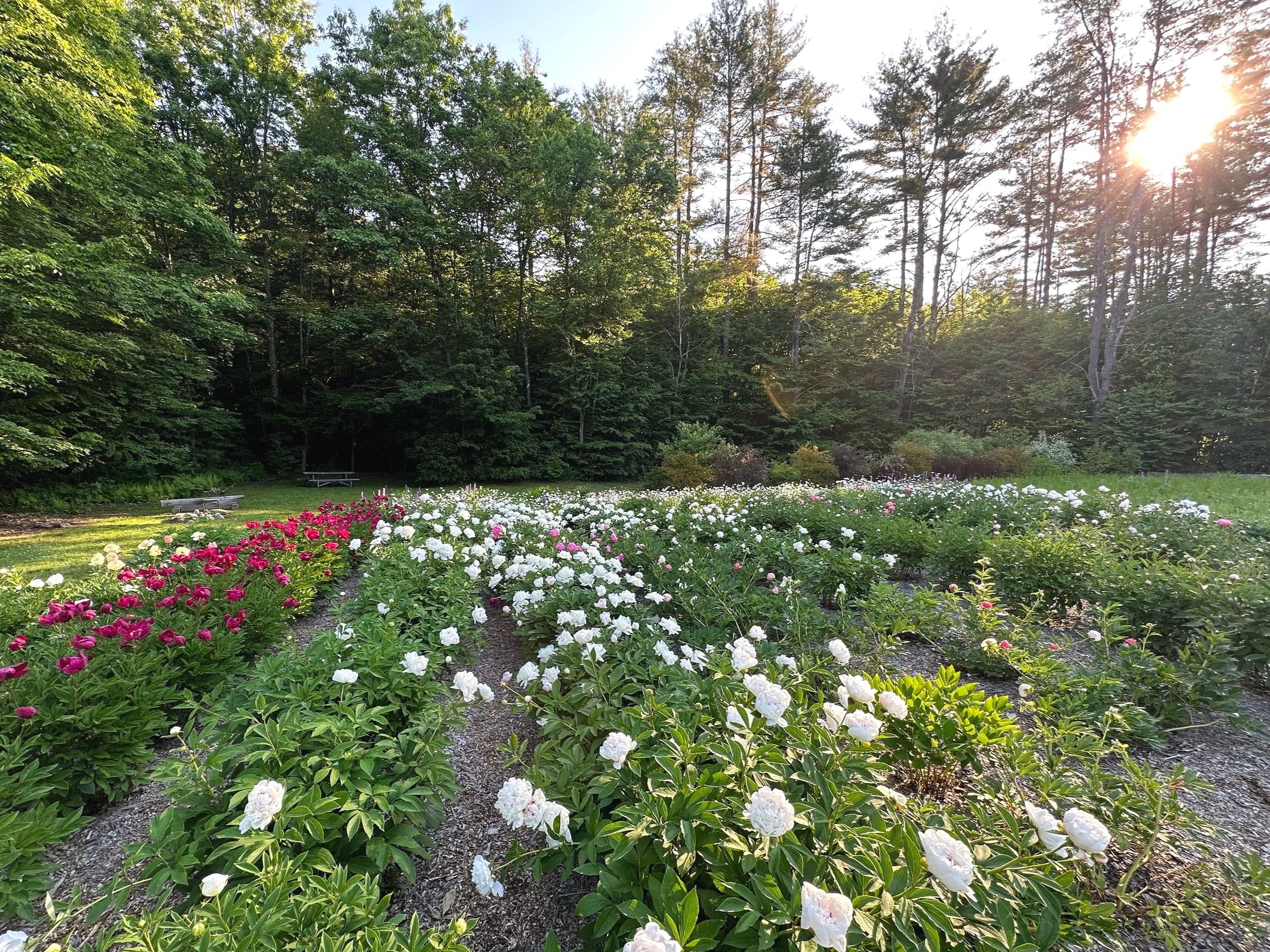If you’re a flower farmer, homesteader, or gardener in Zones 3–7, you may be wondering: When is the best time to plant peonies?
The short answer: Fall is the best time to plant bare root peonies in cold climates. Aim for late September through late November, around your first fall frost. But if your peony roots arrive late—or if you find spring bargains—you still have options. Let’s break it down.
Fall Planting: The Gold Standard for Peonies
Fall planting sets peonies up for success because it gives roots time to establish before winter.
Timing: Late September to late November (or anytime the soil is still workable, not frozen).
Soil Prep: Dig your holes in advance, amend with compost and bone meal, and leave them slightly “mounded” to prevent peonies from settling too deep.
Depth Matters: Plant eyes (the pink or white buds) just 1–2" below the soil surface.
Zones 6–7 → 1–1.5 inches deep
Zones 3–5 → 1.5–2 inches deep
Tip: Planting too deep is one of the most common reasons peonies fail to bloom.
On my farm in Zone 5 Vermont, I’ve successfully planted as late as late November. As long as the soil isn’t frozen, peonies can still settle in for winter.
How to Plant Bare Root Peonies
Dig a hole at least 12" x 12" (up to 24" x 24" in tough soils).
Add 1–2 shovels of compost + ¼ cup bone meal. Mix thoroughly.
Position the root so the eyes sit no more than 2" below the surface.
Don’t be afraid to gently adjust the root—it will still grow.
Backfill with soil, ensuring good root-to-soil contact.
Water well, or time your planting with fall rains and let nature do the work (the latter is how we do it here at Tanglebloom - easy!).
Spring Planting: Still Possible (with Extra Care)
While fall is ideal, you can plant peonies in spring too. At Tanglebloom, I sometimes pick up discounted peony roots from suppliers clearing inventory and plant them in April or May.
Follow the same planting steps as fall.
Watering is crucial: 2–3 times per week, more in dry spells. Drip irrigation is a lifesaver at production scale.
Expect a slower start: Spring-planted roots may lag behind in years 1–2, but by years 3–4, they usually catch up with fall-planted peonies.
The Bottom Line: Fall Wins, But Don’t Skip Spring
If you have a choice, plant peonies in fall. But if opportunity knocks in spring, don’t hesitate—as long as you’re committed to consistent watering. Either way, peonies are a long-term investment that rewards patience with decades of blooms and profitability.
Ready to Grow Peonies Like a Pro?
At Tanglebloom, I teach small-scale flower farmers how to grow peonies for beauty and profit.
👉 Watch my free peony mini-training if you’re ready to take your peony plot to the next level.
Peonies aren’t just gorgeous—they can be one of the most reliable, low-maintenance, and profitable crops on your farm. Plant them right, and they’ll reward you for decades
FAQ: Planting Peonies in Zones 3–7
When is the best time to plant peonies in Zones 3–7?
The best time is in fall, from late September through late November, around your first frost date. You can plant as long as the soil is still workable and not frozen.
Can I plant peonies in spring?
Yes, spring planting is possible, but it requires more watering. Expect to water 2–3 times per week, especially during dry spells. Spring-planted peonies may be slower to establish but usually catch up by year 3 or 4.
How deep should I plant peonies?
Plant peony eyes (the pink or white buds) no more than 1–2 inches below the soil surface.
Zones 6–7: 1–1.5 inches
Zones 3–5: 1.5–2 inches
Why won’t my peonies bloom?
The most common reason is planting too deep. Peonies need their eyes close to the surface (1–2 inches) and a prolonged cold period to produce flowers.
What soil is best for peonies?
Peonies prefer well-drained soil enriched with compost and a small amount of bone meal. Avoid planting in soggy or heavy clay soils without amendment.
Do peonies need to be watered after planting?
Yes. Water thoroughly after planting in fall, or rely on seasonal rains. For spring planting, keep soil consistently moist until plants are well established.

